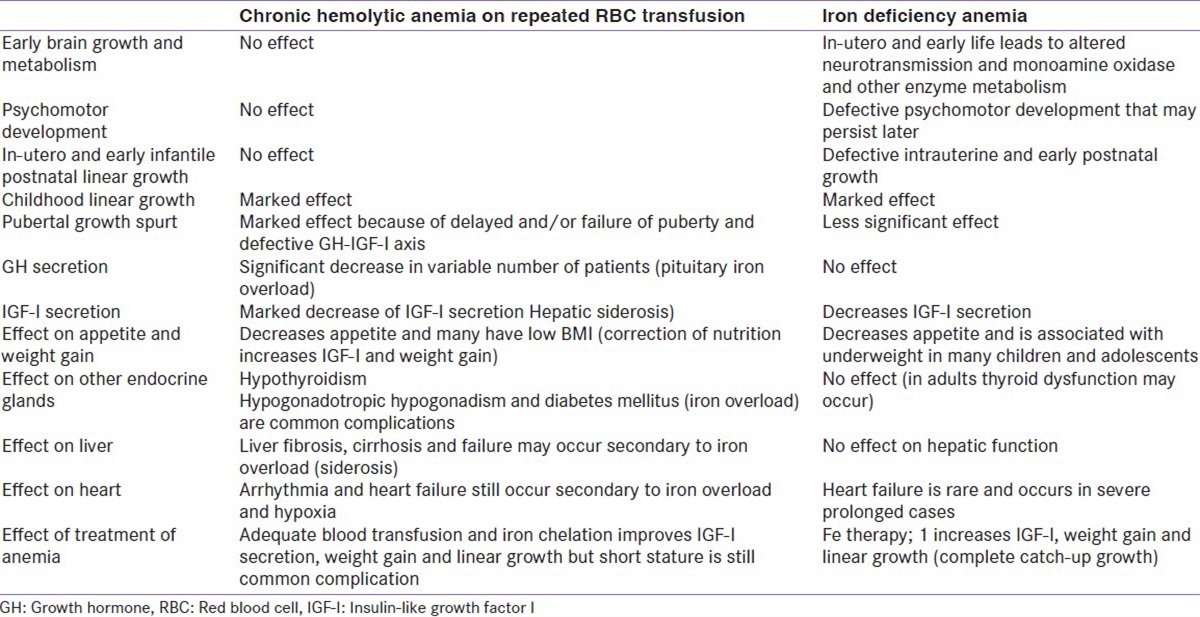GermanCel
6'10 Chad
- Joined
- Oct 16, 2023
- Posts
- 109
- Reputation
- 125
So basically the most common nutrient deficiency in the world is Iron. Unless you eat much red meat you're propably deficient in it too.
Now Iron actually plays a crucial role in growth. If you have poor Iron, all you heightmaxxes will literally be bottlenecked / hindered !
One study was very Interesting:
"
Soliman et al. measured growth and parameters in 40 children (aged 17.2 ± 12.4 months) with IDA before and for 6 months after iron therapy in comparison with normal controls. Before treatment children with IDA were significantly shorter and had slower growth compared with age-matched controls. After treatment, their growth velocity (GV), length standard deviation scores (SDS) and body mass index (BMI) increased significantly (significant catch-up of growth). Their GV was correlated significantly with mean Hb concentration :
"
Iron Supplementation in iron deficient children had significantly greater IGF1 levels.
TLDR: Iron Deficient children (mean age 17.2 years) had about 6cm more growth per year, mainly due to more grehlin (and thus more appetit and HGH) and significantly higher free IGF1 Levels.
Sources:
https://pubmed.ncbi.nlm.nih.gov/19261662/

 journals.lww.com
journals.lww.com
Now Iron actually plays a crucial role in growth. If you have poor Iron, all you heightmaxxes will literally be bottlenecked / hindered !
One study was very Interesting:
"
Soliman et al. measured growth and parameters in 40 children (aged 17.2 ± 12.4 months) with IDA before and for 6 months after iron therapy in comparison with normal controls. Before treatment children with IDA were significantly shorter and had slower growth compared with age-matched controls. After treatment, their growth velocity (GV), length standard deviation scores (SDS) and body mass index (BMI) increased significantly (significant catch-up of growth). Their GV was correlated significantly with mean Hb concentration :
Linear growth in children with iron deficiency anemia before and after treatment
Abstract
We measured growth [length (L) standard deviation score (SDS), growth velocity (GV) SDS and body mass index (BMI)] and hematological (hemoglobin, hematocrit, MCV and MCH) parameters in 40 children (aged 17.2 +/- 12.4 months) with iron deficiency anemia (IDA) before and after iron therapy. Before treatment children with IDA had LSDS = -1.2 +/- 1, GV = 7.5 +/- 2.2, GVSDS = -1.42 +/- 0.6 and BMI = 13.5 +/- 1.2. They were significantly shorter and had reduced growth as compared with age-matched controls. After treatment, their growth parameters significantly increased with LSDS = -0.6 +/- -0.9, GV = 13.2 +/- 4.4 cm year(-1), GVSDS = 1.7 +/- 0.5 and BMI = 14.2 +/- 1.1. Their GV correlated significantly with serum ferritin concentration (r = 0.48, p < 0.001) and BMI (r = 0.32, p < 0.1). In summary, IDA during the first 2 years of life significantly impairs growth."
Effect of iron deficiency anemia and iron treatment on growth hormone-insulin-like growth factor-I axis
Novel endocrine pathways have been proposed to explain the effect of IDA on growth. Anemia imposes a hypoxic condition on hepatocytes. Hepatic protein synthesis is inhibited by hypoxia. In vitro, low oxygen conditions inhibit insulin-like growth factor-I (IGF-I) action by increasing IGF binding protein -1 (IGFBP-1), especially phosphorylated IGFBP-1, which inhibits IGF-I action. In addition, IGF-I-induced cell proliferation is also inhibited in low oxygen conditions.Iron Supplementation in iron deficient children had significantly greater IGF1 levels.
TLDR: Iron Deficient children (mean age 17.2 years) had about 6cm more growth per year, mainly due to more grehlin (and thus more appetit and HGH) and significantly higher free IGF1 Levels.
Sources:
https://pubmed.ncbi.nlm.nih.gov/19261662/

Anemia and growth : Indian Journal of Endocrinology and Metabolism
An abstract is unavailable.

